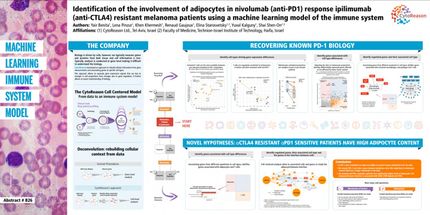How much smoking is safe?
Low level smoking found harmful
Smokers often wonder if smoking less might be safer for their health. The answer appears to be no. Occasional smoking, and even second-hand smoke, create biological changes that may increase the risks of lung disease and cancer, according to a new study.
Even at the lowest detectable levels of nicotine in urine, the genes most sensitive to tobacco smoke in cells lining the lung's airways begin to function differently, reports a study authored by Cornell and New York-Presbyterian Hospital/Weill Cornell Medical Center (NYPH/WCMC) researchers and published in the American Journal of Respiratory and Critical Care Medicine.
This is the first study to show that even minimal exposure to tobacco smoke triggers signs of detectable smoking stress in the genomewide gene expression profile of the lung. The technique developed for the study, which analyzed some 372 genes known to be sensitive to smoking, could potentially be used to detect the onset of a number of other nonsmoking related diseases.
To diagnose the start of lung disease, "you'd have to follow someone who smokes for many years, but what we have here is a signal that shows up at very low levels," said Larsson Omberg, a postdoctoral researcher in biological statistics and computational biology (BSCB) and one of the paper's lead authors.
As a technique applicable to nonsmoking related diseases, "it's a foundation that we can build on," added co-author Jason Mezey, an assistant professor in BSCB, whose lab directed the statistical analysis.
Dr. Ronald Crystal, senior author of the study and chief of pulmonary and critical care medicine at NYPH/WCMC, analyzed the urine (for nicotine and cotinine, the chemical into which the liver breaks down nicotine) and cells from the small airways of the lung of 121 individuals. Urine nicotine and cotinine levels were used to categorize volunteers as nonsmokers or occasional or heavy smokers.
Omberg, Mezey and colleagues drew upon various methods for analyzing genes quantified by microarray analysis. By combining methods, they created a new process that allowed them to see the effects of smoking on single genes as well as the entire genome at very low levels of exposure.
The researchers found that in the volunteers with "low exposure" to smoking, more than one-third of the 372 genes sensitive to smoking were triggered. (Some genes have lower expression and some genes have higher expression when exposed to tobacco smoke). This smoke stress was observed even when urine nicotine was below detectable levels, and when urine cotinine was just barely above detectable levels.
Also, the study found, heavy smokers triggered more of these genes and the expression of individual genes increased accordingly.
"The model allows us to predict, based on nicotine and cotinine levels, how much a gene may be expressing," said Omberg. The method also allowed them to analyze all genes across the genome as one function. "Using genomewide data, one can extract more subtle patterns of the effects of low levels of exposure," added Mezey.
Funding for the study came from grants from the National Institutes of Health, the Flight Attendant's Medical Research Institute, and the Cornell Center for Comparative and Population Genomics.
Most read news
Topics
Organizations
Other news from the department science

Get the life science industry in your inbox
By submitting this form you agree that LUMITOS AG will send you the newsletter(s) selected above by email. Your data will not be passed on to third parties. Your data will be stored and processed in accordance with our data protection regulations. LUMITOS may contact you by email for the purpose of advertising or market and opinion surveys. You can revoke your consent at any time without giving reasons to LUMITOS AG, Ernst-Augustin-Str. 2, 12489 Berlin, Germany or by e-mail at revoke@lumitos.com with effect for the future. In addition, each email contains a link to unsubscribe from the corresponding newsletter.





















































